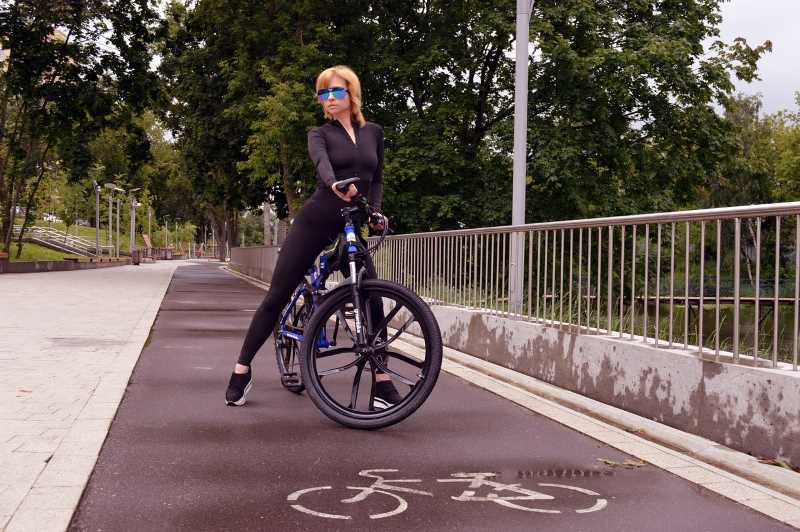How to Outsmart Pollution While Cycling
Cycling in urban areas offers health benefits, but exposes riders to pollutants. Researchers emphasize separate cycling lanes & pollution reduction to ensure sustainable and healthier commuting options.

In bustling cities like Mexico City, where traffic congestion and air pollution are everyday challenges, cycling has emerged as an increasingly popular mode of transportation. Not only does it offer a sustainable and efficient way to navigate crowded streets, but it also provides numerous health benefits.
However, recent research indicates that regular cyclists may face higher exposure to pollutants due to their increased respiratory rate. This issue was highlighted by Patricia Segura Medina, a tutor in the PhD in Biomedical Sciences at UNAM, affiliated with the Department of Bronchial Hyperreactivity at the National Institute of Respiratory Diseases (INER).
The World Health Organization (WHO) has long recognized environmental pollution as the most significant risk to human life. The various pollutants encountered in urban environments include carbon monoxide, ozone, nitrogen oxide, sulfur dioxide, volatile organics, and suspended particles like PM2.5 and PM10, among others. These pollutants, along with aerobiologicals such as pollen, algae, fungi, bacteria, viruses, and polycyclic aromatic hydrocarbons, can have severe health implications.
Immediate effects of exposure to these pollutants may include asthma, respiratory infections, heart attacks, conjunctivitis, sinusitis, dermatitis, and dyspnoea. In the long term, chronic obstructive pulmonary disease and chronic infections are possible consequences.
Despite the potential health risks, cycling has its merits. Patricia Segura emphasized the numerous benefits associated with regular cycling. It enhances respiratory capacity, lowers triglyceride and cholesterol levels, improves mental health, prevents heart disease, promotes coordination, and helps prevent the accumulation of body fat. Moreover, from an environmental perspective, cycling significantly reduces emissions, noise pollution, and the contribution to global warming. It also eases traffic congestion, frees up road space, and combats deforestation.
Oscar Augusto Pérez, from the Department of Environmental Sciences at the Institute of Atmospheric Sciences and Climate Change, contributed to the discussion with insights from a study conducted in 2020. The research focused on primary pollutants in bicycle lanes across Mexico City. The findings revealed that cyclists may be exposed to up to 10 times higher concentrations of carbon monoxide and PM2.5 particulate matters than what is recorded by conventional air quality monitoring stations. For instance, during an hour of cycling, a person might inhale 300 µg of PM2.5 (including 30 µg of black carbon) and 2.4 mg of carbon monoxide if a breathing rate of 0.5 m3/h is considered.
To address the issue of increased pollutant exposure, both researchers stressed the importance of separating human-powered vehicles from combustion vehicles whenever possible. Maintaining distance from buses can significantly improve the air quality for cyclists, and using a mouthpiece may help protect against particulate matter inhalation. One suggestion for avoiding pollutant exposure entirely is cycling at night; however, this presents challenges related to visibility and safety.
For daytime cycling, Patricia Segura offered preventive measures to mitigate the impact of pollution. She advised checking the UV index to be aware of ultraviolet radiation intensity, as the peak hours for solar radiation are from 10:00 to 16:00. Cyclists should protect their skin, seek shade, wear sunglasses, and opt for long-sleeved clothing and sunscreen.
In conclusion, while cycling brings numerous health benefits and contributes to a cleaner environment by reducing emissions, cyclists in urban areas must be aware of the potential risks associated with increased pollutant exposure. The research suggests that cities should prioritize creating separate cycling lanes and implementing measures to reduce air pollution, particularly in areas with heavy traffic. Furthermore, cyclists themselves can take preventive actions to minimize the impact of pollution during their rides. By striking a balance between reaping the advantages of cycling and safeguarding health and the environment, cities can encourage sustainable and healthier commuting alternatives for their citizens.




